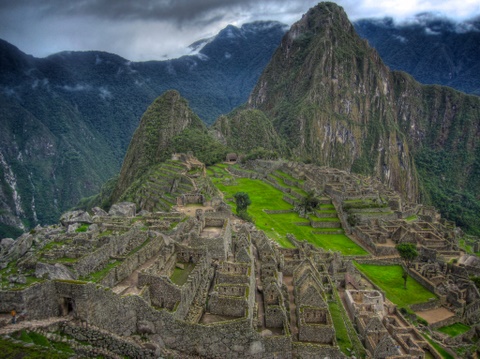July marked the 100th anniversary of the rediscovery of Machu Picchu, an appropriate time to reflect on the impact of tourism on the UNESCO World Heritage Site. According to the Associated Press, the ancient Incan city welcomes an average of 1,800 visitors per day. With so much tourist activity at the ruins and the surrounding area, what steps are authorities and tour operators taking to mitigate environmental and cultural damage?
The Cusqueña beer incident in 2000 is an unfortunate example of the damage the site has suffered as a result of its iconic status. The Peruvian beverage company was granted permission to film a commercial at the site, but a camera broke off a piece of the granite intihuatana, or “hitching post of the sun,” a carved stone pillar that is part of the most important shrine in the site, as reported by The Guardian.

According to the Associated Press, UNESCO authorities are concerned about “deforestation, the risk of landslides, uncontrolled urban development and illegal access to the sanctuary.” UNESCO has considered adding the site to its Endangered List but has so far not done so. In addition to problems at the site itself, families in the area have suffered loss of land and increasingly contaminated water since the sewage system doesn’t support such an influx of people. Locals have also experienced rising inflation of food prices, because tourists will pay more for the goods.
A presentation by UNESCO officials convinced Allie Almario, Vice President of adventure travel company Myths and Mountains, that adding Machu Picchu to the Endangered List is a good idea. “I think it would be a good wakeup call,” she says. “People will look at it and say, okay what other measures can we take to preserve this place?” She has noticed that many travelers are looking for other places to explore in Peru besides Machu Picchu, such as the pre-Incan ruins at Chan Chan near Trujillo.
Tammy Leland, co-founder of Crooked Trails, a nonprofit, community-based travel organization, fears that adding Machu Picchu to the Endangered List might restrict access to the public. “There are other ways to mediate the environment and cultural damage on such a large site,” she says. Leland reports that the Peruvian Ministry of Culture is thinking of limiting the day pass to the site to three hours or having guards stationed to limit the time at each point. Officials are also considering offering alternate checkpoints to get into Machu Picchu to alleviate congestion at the entrance gate. “I love Machu Picchu, but I think there are a million sites in Peru that need protection,” Leland says. “Alternate entrance points is a good idea, and of course it means more staff. But to me, that’s the best solution.”
The Ministry of Culture has already implemented several policies to protect Machu Picchu – for example, only 400 people per day are allowed to climb Huayna Picchu, a steep hill at the edge of the ruins.
Furthermore, Almario says the Peruvian government has recently imposed a limit of 500 daily permits for the Inca Trail, which includes all visitors, including guides and trekkers.
“Permits for the Inca Trail are based on a lottery system,” Almario explains, although booking early still increases the chances of receiving a permit. Almario says tour operators are now offering shorter hikes and alternatives to the traditional 4- or 5-day Inca Trail trek “because there’s no longer guarantee that they’ll get the permits.”
As an alternative to Machu Picchu, Leland recommends the ruins at Choquequirao. “It’s just an amazing place. It’s a 4-hour drive from Cuzco to get to the hiking village, then it’s a 2-day hike from there to the ruins 10 times the size of Machu Picchu.”
According to Claire Andre de Cerff, Research and Development Manager at Inkaterra, which offers lodging and travel packages throughout Peru, 10 to 20 percent of entrance fees collected at Machu Picchu go to the municipality of Machu Picchu Pueblo (also known as Aguas Calientes), while revenues from tourism are the only income for the approximately 5,000 residents of the town.
Peruvian tourism authorities say they have issued a decree that will funnel tourism revenue directly back toward site maintenance – rather than to the central government – in an effort to preserve the site, the Associated Press reports. With effective management, a system like this will ensure that the tourists who admire Machu Picchu can also contribute to its well-being for another 100 years – and beyond.
Read Ethical Traveler's Reprint Policy.
